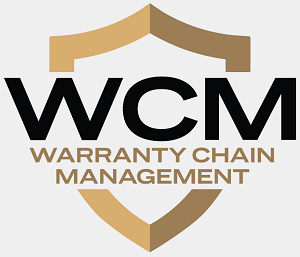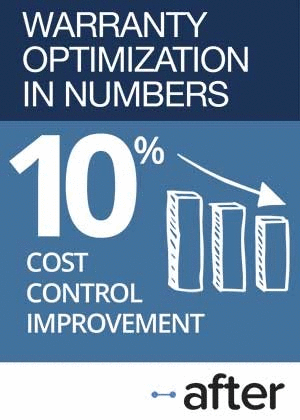HP's Warranty Accounting:
Before the split, HP's warranty expenses were declining for multiple years. After the split, the laptop and printer company has much higher warranty expenses than the server and storage company.
In the next four weeks, most of the major players in the U.S. product warranty business are going to file their annual reports for 2015, revealing their total sales an their warranty expenses for the year gone by. But because Hewlett-Packard Company ended its fiscal year in October, its annual report is already out. And because it split itself in half, there are actually now two separate annual reports that we need to examine.
Actually, because of the timing of the spin-off, we can examine both the final year of the old parent company as well as the first two years of the offspring. And we can compare the three entities in terms of claims paid, accruals made, warranty reserves held, and the expense rates of each.
Let's start with a look at the parent -- the computer manufacturer founded in a garage in 1935 by Bill Hewlett and Dave Packard. Back then the company made test equipment, and later branched out into electronic calculators, printers, copiers, fax machines, and eventually personal computers, minicomputers, and servers.
This company changed its name to HP Inc. at the conclusion of its fiscal year ended October 31, 2015, spinning off the server line of business into a new company called Hewlett Packard Enterprise Co., and keeping its printer and PC lines of business.
Warranty Expense Totals
In Figures 1 through 4, we're going to pretend that rather than changing its name to HP Inc. and shrinking through the spin-off, that it was an intact HP Co. that made its last financial report for the year ending Oct. 31, 2015. That way, we can complete a set of charts that documents the company's warranty expenses from fiscal 2003 until last year.
Figure 1 contains 52 data points for the company's warranty claims cost per quarter during those 13 years. As the company has pointed out numerous times, not all of these totals are actual cash payments. Some of it is indirect costs such as a percentage of call center expenses that goes towards warranty work, or payments in kind of one sort or another to channel partners, repair organizations, and suppliers.
Figure 1
HP Company's Product Warranties
Claims Paid per Quarter, 2003 to 2015
(in Millions of U.S. Dollars)

What this chart clearly shows is that HP's warranty claims cost has been declining. Back in fiscal 2008, the company spent more than $3 billion on claims in a single year for the first and only time in its history, with a peak quarterly outlay of $779 million just for the months of February, March, and April 2008. But at the time, its product revenue was almost $91.7 billion, so it was a manageable percentage of that total being spent on warranty claims.
By the time HP Co. became HP Inc. late last year, the quarterly claims total was down to $414 million, and the annual outlay was down to $1.7 billion. That's to be expected, given that computer hardware and printer sales were also declining for all those intervening years. And in fact, the warranty expenses were declining faster than sales, reflecting a more efficient warranty management system and less warranty spending per product sold.
Warranty Accruals
In Figure 2 we're tracking the quarterly accruals made by HP Co. over the 13 years from 2003 to 2015. Once again, 2008 marks the peak and 2015 is the trough, though the rise and fall for this warranty metric over the years hasn't been as smooth as it was for warranty claims payments. The highest outlay of them all was the $860 million accrued in the second quarter of fiscal 2008 and the lowest was the $361 million accrued in the second quarter of fiscal 2015.
Figure 2
HP Company's Product Warranties
Accruals Made per Quarter, 2003 to 2015
(in Millions of U.S. Dollars)

The highest yearly accrual total was $3.35 billion in fiscal 2008 and the lowest was $1.51 billion in fiscal 2015. In other words, accruals hit both higher highs and lower lows than claims did, reflecting how claims are spread out over the life of the products under warranty while accruals are concentrated at the time a product is sold.
Warranty Reserves
With the addition of accruals made and the removal of claims paid, the balance in HP's warranty reserve also rose and fell over the last 13 years. In Figure 3, we're looking at the ending balance in the company's warranty reserve for the last 52 quarters, from fiscal 2003 to 2015.
Figure 3
HP Company's Product Warranties
Reserves Held per Quarter, 2003 to 2015
(in Millions of U.S. Dollars)

Once again, the highest balance came in 2008 and the lowest was seen last year. It briefly exceeded $2.6 billion in October 2008 and dipped to $1.7 billion in October 2015 -- a change of more than $900 million.
For all 13 years, HP Co. simply segmented its net revenue into products, services, and financing income. To calculate the company's claims and accrual rates, we used just the product revenue in the bottom of our fraction. For instance, in fiscal 2014 the company reported $1.93 billion in claims paid, $1.84 billion in accruals made, and $73.7 billion in product revenue, resulting in a claims rate of 2.6% and an accrual rate of 2.5%.
Warranty Expense Rates
In Figure 4, we've taken the claims and accrual data from Figures 1 and 2 and divided them by the corresponding product revenue totals, to get twin lines of 52 data points for HP's claims and accrual rates. Because these percentage rates are the result of a comparison with product sales, they rise and fall at a different pace from the expenses themselves. For instance, the peak rates for both metrics came early in the period rather than in 2008, though the lowest rates did in fact come in fiscal 2015, when sales, claims, and accruals all bottomed out together.
Figure 4
HP Company's Product Warranties
Claims Paid & Accruals Made as a
Percentage of Product Revenue, 2003 to 2015
(in Percent)

As was mentioned, all of this data is now merely historical, because HP Co. has been split in two and changed its name. Hewlett Packard Enterprise Co. (HPE) has been spun off, and HP Inc. is the new name of the remainder of the old parent company.
Separating the Offspring
When HP Inc. filed its annual report, it did so as if the spin-off had not yet occurred. However, when HP Enterprise filed its inaugural annual report with the U.S. Securities and Exchange Commission, it provided revenue and warranty expense figures for just itself, for both fiscal 2015 and fiscal 2014.
What we're going to do is subtract one from the other, calculating the separate warranty expenses for a post-spin-off HP Inc. based on the known figures for HP Co. and HPE. In Figure 5 we're looking at the three entities' warranty claims totals for 2014 and 2015: the first and third columns are for HP Co., and the second and fourth columns are for the separated HP Inc. and HPE.
Figure 5
HP Inc. & HPE's Product Warranties
Claims Paid per Fiscal Year, 2014 to 2015
(in Millions of U.S. Dollars)

When the company split in two, roughly half the revenue went to each new entity. However, a much higher share of the HP Inc. sales total was made up of warranted hardware. Therefore, even though each got half the revenue, HP Inc.'s share of the claims total turned out to be about three-quarters of the parent's claims total. In fact, in 2014 its share was 74%, rising to 76% in 2015.
The same goes for warranty accruals. Of the parent's $1.84 billion accrual total in 2014, more than 74% turned out to be HP Inc. while only 26% turned out to be HPE. In fiscal 2015, HP Inc.'s share rose to 75% of the total while HPE's share dropped to 25%. It's a simple reflection of the fact that laptops and printers are more warranty-intensive than servers or storage systems.
Figure 6
HP Inc. & HPE's Product Warranties
Accruals Made per Fiscal Year, 2014 to 2015
(in Millions of U.S. Dollars)

And it's much the same story for the split in warranty reserves. Of the $1.96 billion HP Co. held in warranty reserves as of October 2014, we reckon that about 71% went to HP Inc. while about 29% went to HPE. By October 2015, HP Inc.'s share of the $1.7 billion total had fallen to 69%, while HPE's total had risen slightly to 31%. Both company's reserve balance was down, but one's declined at a slightly slower pace.
Figure 7
HP Inc. & HPE's Product Warranties
Reserves Held per Fiscal Year, 2014 to 2015
(in Millions of U.S. Dollars)

HPE is still likely to remain a top 10 warranty provider in the U.S., ranked somewhere near Boeing and Navistar. But only 32% to 37% of its total revenue comes from warranted servers and systems, while 70% to 88% of HP Inc.'s total revenue comes from warranted PCs and printer hardware. And this causes the primary difference between the two new entities: not only does HP Inc. have higher warranty expenses than HPE, but it also pays them at a higher rate.
New Warranty Expense Rates
In Figure 8, we've taken the warranty expense totals from Figures 1, 2, 5 and 6 and compared them to the corresponding warranted hardware sales totals for each company. As noted, the HP Co. warranty expenses are compared to the HP Co. product revenue figures, as was done in Figure 4. The other two line pairs are a little different, because each company is now providing a more detailed segmentation of its product revenue.
For instance, HP Inc. now provides separate figures for printer consumables and hardware, which HP Co. did not. And HPE now provides separate figures for hardware and software, which HP Co. did not. As a result, the warranted product totals for HP Inc. and HPE aren't as high as they were for HP Co. This has a slight impact on HPE's warranty expense rates, and a somewhat more visible change on those of HP Inc.
Figure 8
HP Inc. & HPE's Product Warranties
Claims Paid & Accruals Made as a
Percentage of Product Revenue, 2014 to 2015
(in Percent)

For HPE, the net change is very small, with the newly-calculated 2014 data points being only .03% to .04% lower than the parent company's. However, keep in mind that the 2014 expense rates for HPE are merely theoretical, because the company didn't exist at the time. But if it had, its servers and storage systems would have had roughly the same warranty expense rates as the parent. In 2015, the difference is more noticeable, with HPE's warranty expense rates a third to a half a point lower than the former parent's.
Conversely, HP Inc. has much higher warranty expense rates than its former parent, as can be clearly seen in Figure 8. For these past two fiscal years, HP Inc's warranty expense rates have been running about 0.8% to a full percentage point higher than HP Co.'s rates did. But again, part of the reason for this difference is that HP Inc. is allowing us to subtract the consumables before making our calculations, while HP Co. did not.
However, as is the case when we looked at comparable companies such as Lexmark International Inc., the suspicion is that printer hardware alone has a very high warranty expense rate, because prices are kept low to retain customer loyalty. The profit is made on sales of ink and toner, which are consumable products.
Likewise, we've always found that the smaller the computer, the higher its warranty expense. Palm Inc., before being acquired by HP, had some very high warranty expense rates. Dollar for dollar, laptops have higher warranty expense rates than desktops, and desktops have higher rates than servers. So HP Inc. is at the high end of the scale with both its PCs and printer product lines. And the chart above proves it.









